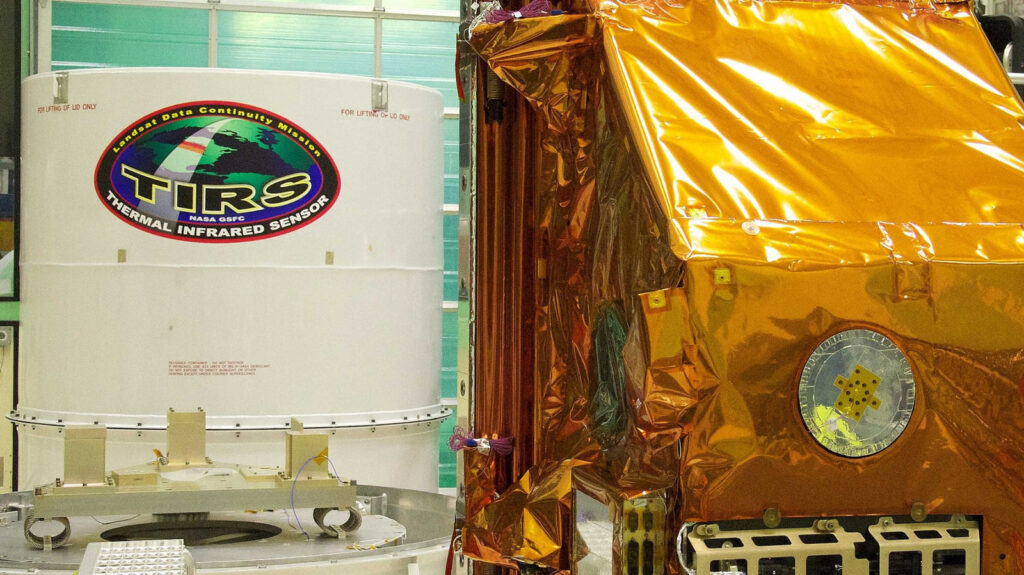NASA’s use of what appears to be ‘gold foil’ on satellites and spacecraft has long intrigued both the scientific community and the public. While the shiny, golden appearance of these materials might suggest the use of actual gold, the reality is quite different. The so-called ‘gold foil’ is actually a sophisticated material known as Multi-Layer Insulation (MLI), designed to protect spacecraft from the extreme conditions of space.
The history of NASA’s association with gold-colored materials dates back to several iconic missions. In 1996, the Mars Global Surveyor was equipped with a gold-plated telescope mirror to map the Martian surface. Earlier, in 1977, NASA launched the Voyager 1 and 2 spacecraft carrying golden records, intended as messages to potential extraterrestrial finders. Perhaps most famously, the Apollo 11 Lunar Module, known as the “Eagle,” was wrapped in what appeared to be gold foil when it landed on the Moon on July 20, 1969.
The Science Behind the ‘Gold Foil’
Despite its appearance, the ‘gold foil’ on spacecraft is not made of gold. Instead, MLI consists of multiple layers of aluminized polyimide or polyester films, such as Mylar, DACRON, and Nomex, coated with aluminum. The outer layer, which appears gold, faces outward, while the silver aluminum side faces inward towards the spacecraft. This configuration is crucial for thermal control.
Spacecraft are exposed to harsh thermal environments, with temperatures ranging from -200°F to over 300°F. In such conditions, MLI serves as a thermal blanket, restricting heat flow and maintaining stable internal temperatures. This ensures that onboard electronics and instruments remain functional, a critical requirement for mission success.
Why Not Use Real Gold?
While MLI is effective for thermal management, real gold does find its place in space technology. Gold is highly reflective and resistant to corrosion, making it ideal for specific applications. For instance, thin layers of gold are used on astronauts’ helmet visors to protect against solar radiation and regulate temperature. Gold’s properties also prevent static accumulation and provide durable contacts for electronic components.
Astrophysicist Neil deGrasse Tyson notes that asteroids contain more gold than has ever been mined on Earth, estimated at around 244,000 metric tons.
Historical Context and Future Implications
The use of MLI and gold in space technology reflects a broader history of innovation and adaptation by NASA and other space agencies. As missions become more ambitious, the need for advanced materials will only grow. The development of MLI has been a critical step in enabling long-duration missions and ensuring the safety of both crewed and uncrewed spacecraft.
Looking ahead, the exploration of asteroids and other celestial bodies may open new opportunities for resource utilization, including the potential mining of gold and other valuable materials. This could revolutionize both space exploration and the global economy.
In conclusion, while the ‘gold foil’ on satellites is not what it seems, its role in the success of space missions is undeniable. As technology advances, the materials and techniques used in space exploration will continue to evolve, pushing the boundaries of what is possible in the final frontier.
 World’s First Anti-Sickness Car Promises a Smoother Ride for Motion-Sensitive Drivers
World’s First Anti-Sickness Car Promises a Smoother Ride for Motion-Sensitive Drivers Yulia Putintseva Requests Spectator Removal at Wimbledon Over Safety Concerns
Yulia Putintseva Requests Spectator Removal at Wimbledon Over Safety Concerns Exploring Canadian Cuisine: A Culinary Journey Across a Diverse Nation
Exploring Canadian Cuisine: A Culinary Journey Across a Diverse Nation STEM Immigration: Shaping Diversity in the U.S. Workforce
STEM Immigration: Shaping Diversity in the U.S. Workforce How to Observe July’s Brightest Planets: A Stargazer’s Guide
How to Observe July’s Brightest Planets: A Stargazer’s Guide